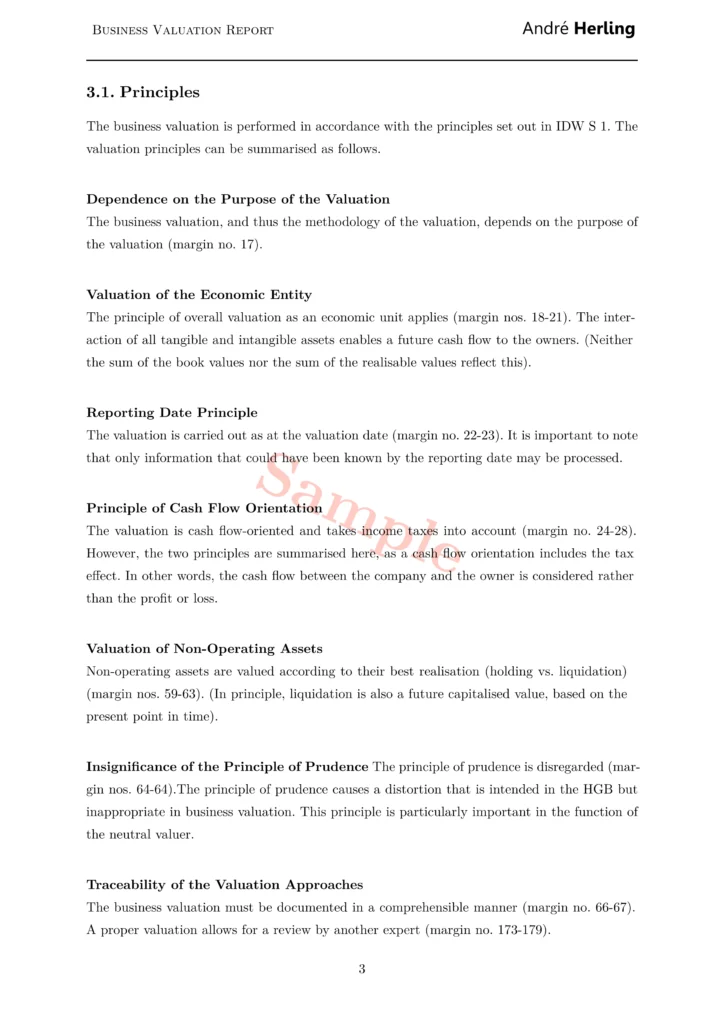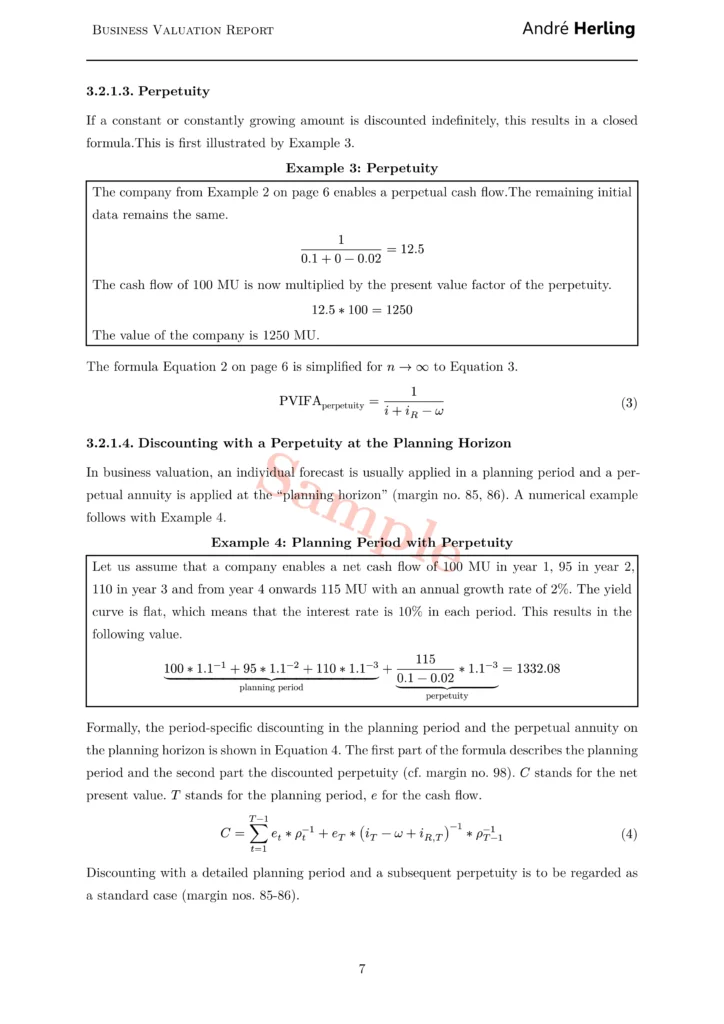Are you looking for a consultant who will partner with you and conducts sound theory-based business valuations? Then you are right here. If a company is valued, uncertainty can either be compressed or unveiled. I simulate the company and its environment on thousands of possible paths. This allows getting a clear picture. Chances and risks are displayed as transparently as possible.
Business valuation is often summarised under the term Mergers and Acquisitions (M&A), but these are only two of four basic forms. It is subdivided into acquisition, sale, merger and demerger. In whatever of this situation you might find yourself in, I will support you during your transaction as an advisor. Speaking 14 languages I can partner with you, especially in an international context. If you want to find out more about me, consider reading the section “About me”.

Receive a high-quality business valuation as a simulation in accordance with recognised standards (IDW S 1) and methods (capitalised earnings method, DCF methods, functional business valuation).

Receive a condensed business valuation in accordance with recognised standards (IDW S 1) and methods (capitalised earnings value method, DCF methods, functional business valuation).

Have an existing business valuation checked for inconsistencies, errors or manipulations. I would also be happy to review the suitability of a valuation method with you.



Through a business valuation, the company value is calculated, which in a nutshell, reflects the benefit of the future cash flow to the shareholders. The most important company value in a business valuation is the decision value, which marks the limit to the advantageousness.
The decision value can be calculated by using a mathematical procedure (Operations Research) and is expressed as maximum price (acquisition), minimum price (sale), or quota (marginal rate) in the case of a merger and demerger. The calculated value is always individual.
It depends upon your financial situation. Your credit conditions, your tax situation and your withdrawal preferences count. If there is an intersection between the decision values of two parties, an impartial arbitrator can calculate an arbitration value. Apart from this, there is a value called argumentation value which is used to try to influence the counterparty. This classification is based on the approach of functional business valuation.
Methods for business valuation transform the future cash flow to the shareholders by discounting into the company value, which itself reflects the future benefit to the shareholders. The main methods for business valuation are 1. the approach of functional business valuation, 2. the capitalised earnings method and 3. the DCF-method. These methods are described below. For further assessment methods, please refer to the excellent book by Matschke and Brösel (2013).
The approach of functional business valuation is used for calculating the company value, which is called decision value. The cash flow is discounted by so called-endogenous marginal interest rates, which depend on the valuation subject.
Functional business valuation distinguishes three main functions: the decision function, the mediation function and the argumentation function. They are connected to each the decision value, the arbitration value and the argumentation value. The decision function is used to find a value where the transaction is still acceptable and not adverse.
Next, the mediation function serves to find a compromise between the given parties. The decision value of each party serves as the starting for a fair compromise in the process of price determination.
Last, the argumentation function is important for negotiations. Argumentation values are calculated with the intention to influence the other party.
When calculating the decision value your situation is important, to put it in other words your tax situation, your credit conditions and your withdrawal preferences matter.
The decision value will be calculated using (non-)linear optimisation. Think of a financing plan or a spreadsheet which takes all your cash flows and tax rates into account. To make it short, your finances are optimised to the last cent.
The capitalised earnings method is a method for business valuation and is used for calculating the company value, whereas the future cash flow is discounted by a tax-corrected interest rate. The value should reflect the benefit of the cash flow to the shareholders.
In its origins, the capitalised earnings method is based on the same theoretical findings (endogenous marginal interest rates) as the functional business valuation, but represents a strong simplification of this. Risk is taken into account either through a risk premium or through a correction in the cash flow.
However, the capitalised earnings method is often associated with the objectified capitalised earnings method from IDW S 1. This variation left its former roots. Now it focuses on an objectified value of a business which corresponds to the argumentation value of the functional business valuation (Matschke & Brösel, 2013). The objectified capitalised earnings method in accordance with IDW S 1 is based on a model called TAX-CAPM, from which the discount rate is derived.
The problem is that this company value according to IDW S 1 only coincidentally corresponds to the decision value. The method implies that the endogenous marginal interest rate corresponds to the interest rate of the Tax-CAPM. Explanations of the capitalised earnings value method in various forms can be found here.
Discounted-Cash-Flow (DCF) is a generic term for different methods (APV, WACC, FTE) for business valuation. In a nutshell, the future cash flow (profit distribution) to the shareholders is discounted by a risk-adjusted interest rate and expressed as the company value.
They are build upon the basis of the equilibrium theory of Modigliani and Miller (1958) and a model called CAPM (Sharpe, 1964; Lintner, 1965; Mossin, 1966), or one of its modifications. Three methods/approaches should be mentioned here:
The adjusted present value (APV) approach is a gross approach. In this approach, the enterprise value is made up of the basic present value, the value of debt capital and the value of the tax shield. In contrast to equity, debt capital is tax-favoured. The cash flow to the owners is discounted at the cost of equity (of the unlevered company) at the base present value and the cash flow to the providers of debt capital is discounted at the cost of debt at the value of the debt capital. Similarly, the tax benefit is discounted at the cost of debt to the value of the tax shield. If the value of the debt capital is deducted from the sum of the base present value and the value of the tax shield, the value of the equity is obtained. The cost of equity of the indebted company can be calculated retrospectively.
In practice, the return on equity is calculated using the CAPM model (or an extension), although this is not actually compatible with the equilibrium theory of Modigliani and Miller (1958) in terms of its basic assumptions (Hering 2021).
The weighted average cost of capital (WACC) approach is not based on the equilibrium theory. The free cash flow is discounted with the average cost of capital. This is composed of the cost of equity (of an indebted company) and the cost of debt. The cost of capital rates are weighted according to the ratio of equity or debt capital and the tax shield to total capital. Again in praxis, the cost of equity is derived from the model CPAM. The interest is composed of a base interest rate plus risk-premium (beta-factor).
In the equity approach (FTE), the free cash flow is discounted using the cost of equity (of an indebted company).
All three mentioned approaches can be converted by transformation under the presumption that the cost of equity is the same.